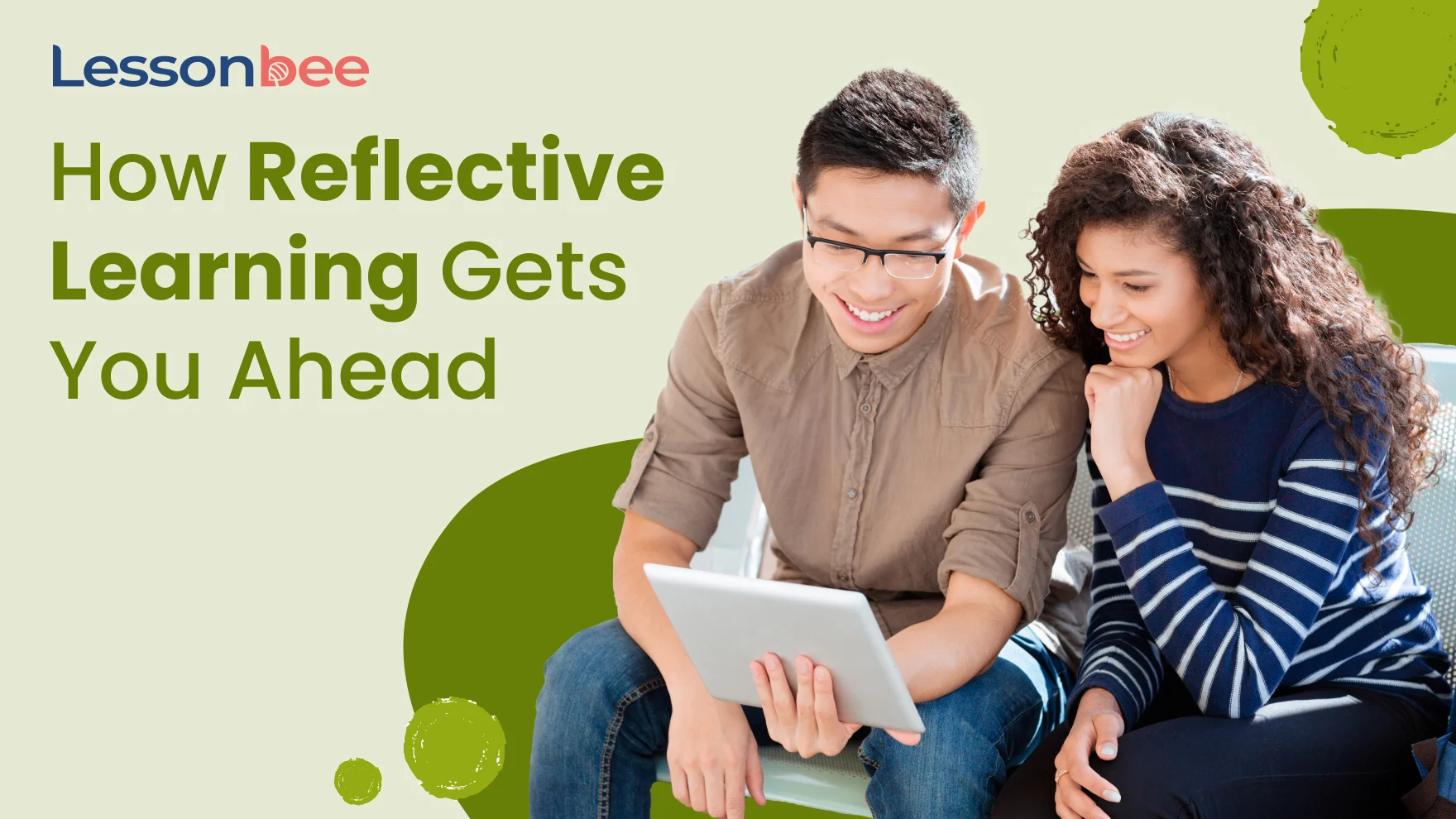
One of Lessonbee’s leading features is Reflective Learning assignments and methods.
Reflective learning allows students to develop critical thinking and improve analyzing skills through hands-on experience. These skills are fundamental to character education and helping young people become responsible, caring, and contributing citizens.
This approach is great for retention. It supports students in their discovery and encourages candor about their takeaways from the lessons.
Wikipedia defines reflective learning as: “A form of education in which the student reflects upon their learning experiences. A theory about reflective learning cites it as an intentional and complex process that recognizes the role of social context and experience.“
Intentional is a keyword. It’s not about memorization, it’s about the application.
Lessonbee offers two types of reflective learning assignments in Lessonbee: Conversational and Challenge-based.
Conversational
With the conversational reflection, a teacher can promote a forum-style discussion among students for a specific lesson or the entire class. While creating the conversational type of reflection, a teacher can upload any reference or supporting audio/visual material as attachments – video, audio, and document files.
The response received from the students can be seen in a conversation style. Once the reflection is completed, the teacher can rate the student and provide the necessary feedback.
Challenge-based
With a challenge reflection, a teacher can give a prompt to the students and ask them to submit their responses in the form of a video. Teacher and student interaction in this scenario empowers the student, provides a vision for the content, and encourages the practice of new skills.
The evaluation mechanism for the challenge reflection differs from the conversational style. In challenge style, a teacher can customize the parameters for grading based on the content or class of reflection. A teacher can upload multiple files as an attachment to the reflection – video, audio, and document files.
Learn more about our reflective learning features by following this link.
Now, to get back to why this method get’s you ahead.
Do you remember when you were a kid, and you’d be struggling to grasp a concept or a lesson, and no matter how hard you tried to concentrate you just couldn’t get it?
We’ve all had that experience at one time or another.
But do you also remember a time you were able to understand or complete that same lesson when you had use of it in your life?
Maybe you struggled with understanding biology—but then, you needed to research biology for a separate project (maybe you were writing a story, or helping a friend with a project) and things clicked into place?
That’s the beauty of reflection and intentional learning. To apply the subjects being taught in a way that makes sense to the student’s life, something they can attach it to, be that a friend, a project, or a goal.
Or, in this case, a reflection that encourages deeper thought.
It won’t always feel like an easy thing to do, and much of the time it’s up to the student if they take it seriously, if they take it to their heart or not.
All we can do is provide the tools and the environment for long term success—help to build the foundation for becoming a lifetime learner. Help them to become the person who is quick to seek understanding, eager to extend empathy, and willing to look closer at concepts they aren’t familiar with.
The students of today will build tomorrow.
